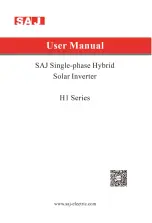
11
GB
Operation / Cleaning, maintenance, storage, transport and ordering of spare parts
Cleaning, maintenance, storage, transport and ordering of spare parts
with a clean cloth or blow it down with com-
pressed air at low pressure.
We recommend that you clean the equipment
immediately after you use it.
Clean the equipment regularly with a damp
cloth and some soft soap. Do not use cleaning
agents or solvents; these may be aggressive to
the plastic parts in the equipment. Ensure that
no water can get into the interior of the equip-
ment.
air filter
In this connection, please also read the service
information.
Clean the air filter at regular intervals, and re-
place it if necessary.
Open both clips (Fig. J/J1) and remove the air
filter cover (Fig. J/J2).
Remove the filter elements (Fig. K/K1)
Do not use abrasive cleaning agents or petrol
to clean the elements.
Clean the elements by tapping them on a flat
surface. In cases of stubborn dirt first clean
with soapy water, then rinse with clear water
and air-dry.
Assemble in reverse order.
Spark plug (fig. l - M)
Check the spark plug for dirt and grime after
20 hours of operation and if necessary clean it
with a copper wire brush. Thereafter service the
spark plug after every 50 hours of operation.
Pull off the spark plug boot (Fig. L) by twisting.
Remove the spark plug (Fig. M/M1) with the
supplied spark plug wrench
24
.
Assemble in reverse order.
Changing the oil and
checking the oil level
(before using the equipment)
The motor oil is best changed when the motor is at
working temperature.
Only use motor oil (15 W 40).
Place the generator on a slightly inclined sur-
face so that the oil drainage screw
8
is at the
lower end.
Open the oil filler screw
7
.
Open the oil drainage screw and let the hot
engine oil drain out into a drip tray.
After the old oil has drained out, close the oil
drainage screw and place the generator on a
level surface again.
Fill in engine oil up to the top mark on the oil
dip stick (approx. 0.6 liters).
IMPOrTanT!
Do not screw the dipstick (oil
filler screw) in to check the oil level, simply
insert it up to the thread.
Dispose of the waste oil properly.
low oil switch-off
The low oil switch-off responds, if not enough en-
gine oil is present. In this case, the engine will not
start or switches off automatically after a short pe-
riod of operation. A restart will only be possible af-
ter topping-up the oil level (see Chapter „Changing
the oil and checking the oil level (before using the
equipment)“).
Preparing the equipment
for long-term storage
Warning:
Do not empty the petrol tank in en-
closed areas, near fire or when smoking. Petrol
fumes can cause explosions and fire.
Empty the petrol tank using a petrol suction
pump.
Petrol and oil have to be disposed off accor-
ding to the regulations. Please inform yourself,
where a suitable collection point is near you.
85052_par_Stromerzeuger_Content_LB7_HR_RO_BG_GR.indd 11
20.11.12 11:51












































